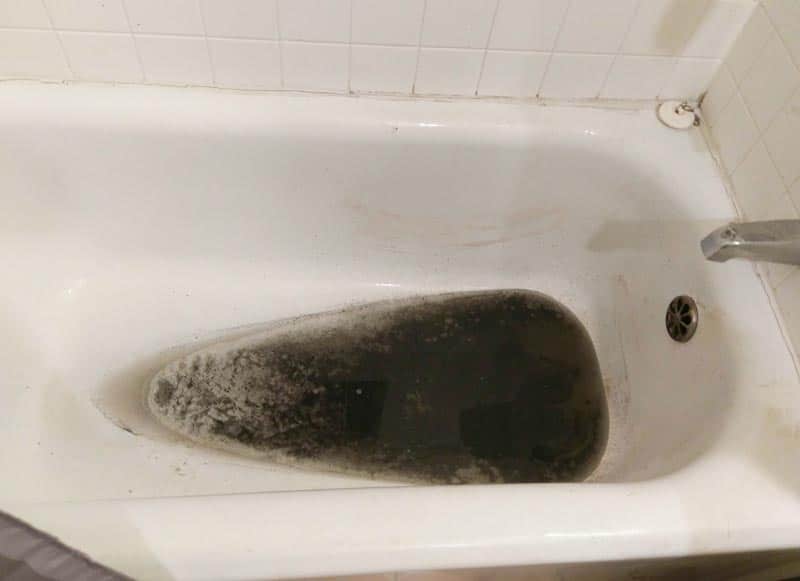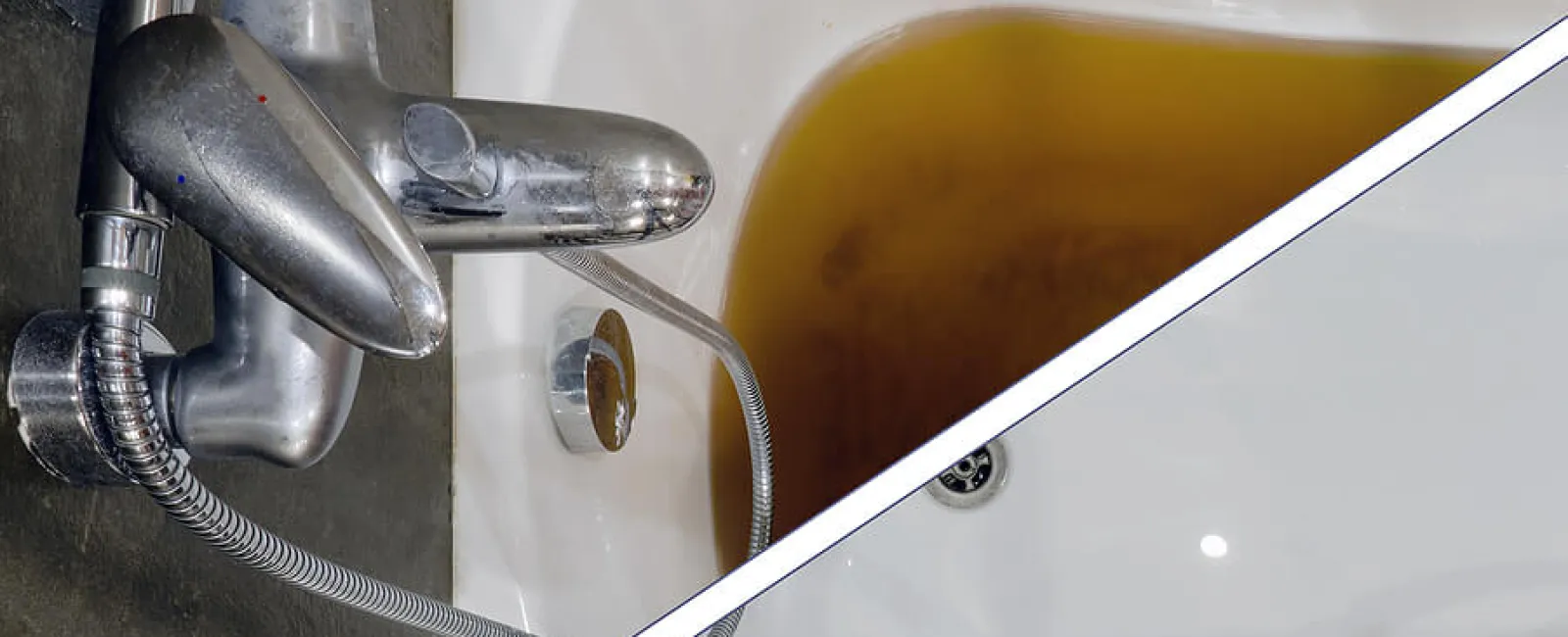Investigating the Phenomenon of Drainage Rising Through the Bathtub
Investigating the Phenomenon of Drainage Rising Through the Bathtub
Blog Article
They are making a number of great points related to Why is Sewage Backing Up Into My Bathtub? in general in this post followed below.

Sewage back-up in the bath tub can be a distressing and unsanitary issue for any home owner. Not just is it troublesome, however it also postures significant health threats and indicates underlying problems with the plumbing system. Comprehending why sewage is coming up via the bathtub is vital for taking suitable activity to resolve the issue effectively.
Introduction to the Problem
Understanding the Trouble
When sewer draws back up right into the bath tub, it's a clear indication of a problem with the water drainage system. The wastewater that should be streaming away from your home is instead finding its way back into your home, which can cause significant damages and health hazards.
Prospective Reasons
A number of elements can contribute to sewage back-up in the bathtub. From blockages in the drain line to problems with the plumbing framework, determining the root cause is essential for finding a service.
Usual Reasons for Sewer Back-up
Obstructions in the Sewer Line
One of one of the most common sources of sewage backup is a blockage in the drain line. This can happen as a result of the accumulation of debris, grease, or foreign objects in the pipelines, avoiding appropriate flow and triggering sewer to support into your bathtub.
Tree Root Intrusion
Tree origins looking for wetness and nutrients can infiltrate drain lines with little fractures or joints. In time, these origins can expand and expand, causing substantial damages to the pipelines and leading to sewage back-up problems.
Aging Infrastructure
Older homes might have outdated plumbing systems that are more vulnerable to corrosion, fractures, and wear and tear. As pipes age, they come to be more vulnerable to leakages and blockages, enhancing the possibility of sewage backup events.
Heavy Rainfall or Flooding
During durations of heavy rainfall or flooding, the sewer system might come to be overwhelmed with excess water, creating backups and overflows. This can result in sewer supporting right into bath tubs and other fixtures inside the home.
Wellness Threats Connected With Sewage Back-up
Contamination of Water
Sewer back-up can infect the water system in your house, posturing a serious health and wellness risk to you and your family. Direct exposure to polluted water can bring about intestinal problems, skin infections, and other diseases.
Spread of Disease
Sewage consists of dangerous microorganisms, viruses, and bloodsuckers that can create a series of diseases, consisting of liver disease, cholera, and gastroenteritis. Entering contact with sewage or contaminated surfaces places you in jeopardy of infection.
Mold and mildew Growth
Moisture from sewer back-up can develop optimal problems for mold and mildew development in your house. Mold and mildew spores can worsen respiratory system issues and trigger allergic reactions in sensitive individuals, making timely clean-up necessary.
Signs of Sewer Backup
Foul Odors
Unpleasant odors rising from drains or fixtures, especially in the bathroom, might show sewage backup issues. These smells are usually solid and persistent, indicating a trouble that calls for prompt focus.
Slow Draining Fixtures
Bath tubs, sinks, and commodes that drain pipes slowly or not whatsoever could be experiencing sewer back-up. If several fixtures are influenced simultaneously, it's most likely that the problem originates from an usual point, such as the primary drain line.
Gurgling Sounds
Strange gurgling or gurgling noises coming from drains when water is running elsewhere in your house are a measure of air entraped in the plumbing system. This air buildup can arise from sewage backup and should be explored without delay.
Immediate Actions to Take
Switching Off Water
In the event of sewage backup, it's important to turn off the water supply to stop additional contamination and damages. Find the major water shutoff valve in your home and closed it off up until the issue can be fixed.
Calling a Specialist Plumber
Taking care of sewage back-up is not a DIY task. Call a certified plumber with experience in managing sewage-related concerns to analyze the circumstance and carry out required repair services or clean-ups.
Preventing Contact with Contaminated Water
Until the sewage backup is dealt with, prevent contact with infected water to prevent the spread of bacteria and virus. Use safety equipment if you need to be in the damaged area and wash your hands extensively later.
Safety nets
Normal Maintenance of Sewer Lines
Set up normal assessments and upkeep of your drain lines to identify and deal with possible problems before they escalate into significant problems. This can consist of cleaning particles, checking for tree origin invasion, and fixing any type of damaged pipelines.
Installing Bayou Valves
Consider setting up bayou valves in your plumbing system to prevent sewage from flowing back into your home during periods of heavy rainfall or flooding. These shutoffs automatically close when water starts backing up, securing your property from contamination.
Correct Disposal of Home Waste
Avoid purging anything other than bathroom tissue and human waste down the toilet to prevent obstructions and obstructions in the sewage system line. Dispose of grease, oil, and various other home chemicals effectively to decrease the risk of plumbing troubles.
Tidying up After Sewer Backup
Disinfection Procedures
Extensively decontaminate and sanitize influenced areas after sewage back-up to eliminate hazardous bacteria and stop mold and mildew development. Use proper cleansing items and protective gear to make sure secure and effective cleanup.
Repair of Impacted Locations
Repair any type of damage to flooring, wall surfaces, or fixtures triggered by sewage back-up. Depending upon the degree of the damages, you may require to replace carpeting, drywall, or other materials to restore your home to its pre-loss condition.
Why Is Water Backing Up in My Bathtub When I Flush My Toilet?
What to do about a sewer line clog
First, don’t bother with plunging. No amount of plunging will dislodge the clog in a sewer line. The clog is too far away. Plungers are for clogs in the toilet itself, not the sewer line. Plus, the most likely causes of a sewer clog are:
Tree roots Flushed toys or feminine products Grease buildup Those items don’t move easily. And in the case of tree roots, the roots need to be cut out of the pipe and the pipe will need to be repaired.
You’ll need a closet auger. A closet auger is a type of plumber’s snake with a protective cover to keep from scratching the delicate porcelain toilet. If the clog is further down, you may need to remove the toilet or use one of your cleanouts to get to the clog.
We also recommend doing a video inspection of the drain to ensure that the cause of the clog has been completely removed. Otherwise, you could have the same problem again in a few days or weeks.
https://mspplumbingheatingair.com/blog/why-is-water-backing-up-in-my-bathtub-when-i-flush-my-toilet

I was shown that write-up about What To Do If Sewage Starts Backing Up Into the Shower through a friend on a different web property. Make sure you take a moment to share this post if you liked it. Thanks a lot for being here. Return soon.
Book A Free Estimate
Report this page